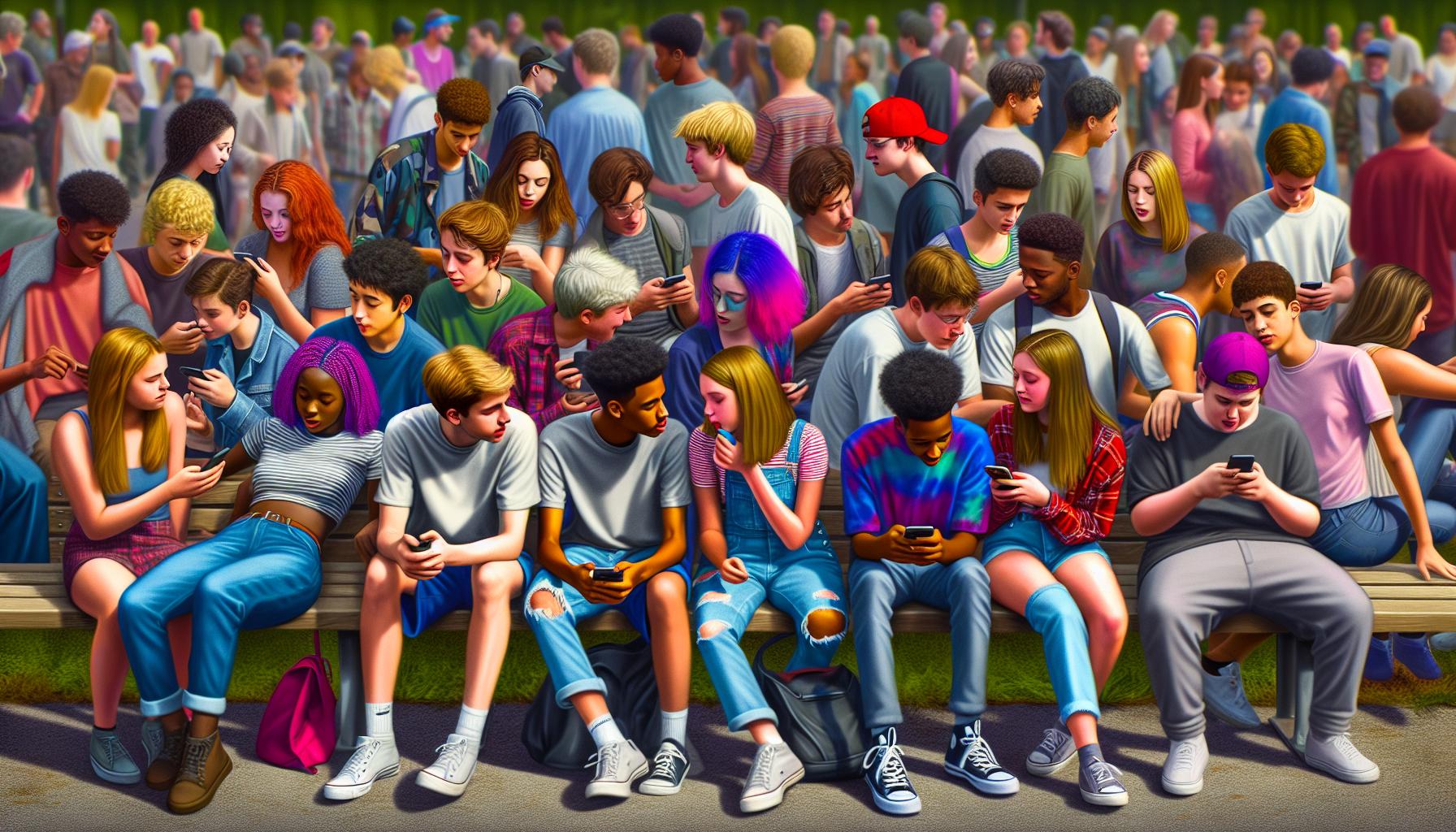As a former high school counselor I’ve witnessed firsthand the complex web of worries that today’s teenagers face. From academic pressures to social media anxiety these concerns can feel overwhelming and all-consuming for young people navigating their teenage years.
While some might dismiss teenage worries as trivial I’ve learned that they’re incredibly real and significant to those experiencing them. The pressure to excel in school maintain friendships handle family expectations and plan for the future creates a perfect storm of stress that many adults don’t fully understand. Through my years of experience working with teens I’ve identified several key areas that consistently top their list of worries – and they might surprise you.
Key Takeaways
- Academic pressure dominates teen life, with 82% affected by homework overload and 68% experiencing test anxiety, while college preparation adds significant stress through complex application processes.
- Physical appearance concerns peak between ages 13-17, with 78% of teenagers affected and social media exposure (4.8 hours daily) intensifying body image worries through unrealistic beauty standards.
- Relationship stress impacts 83% of teens, including friendship drama (65% experience monthly conflicts) and dating anxiety (59% report concerns), while friend groups typically shift every 6-8 months.
- Family dynamics create substantial pressure, with 72% of teens facing parental expectations about grades and activities, while also managing sibling relationships and cultural expectations.
- Mental health is a critical concern, with 31.9% of adolescents experiencing anxiety disorders and 20% facing depression before age 18, often exacerbated by academic pressure and social media use.
- Digital life significantly impacts teens, with 76% stressed about online reputation management and spending an average of 45 minutes daily curating their social media presence across multiple platforms.
What Do Teenagers Worry About
Based on my extensive counseling experience, teenagers face specific anxieties that significantly impact their daily lives. Here’s a detailed look at the primary concerns I’ve observed in my practice.
Academic Performance and School Pressure
Academic stress dominates teenage life with constant pressure to maintain high grades, complete assignments and excel in multiple subjects. Students report spending 3-4 hours on homework daily while balancing extracurricular activities, leading to sleep deprivation. The pressure intensifies with advanced placement courses, standardized testing requirements and competitive class rankings.
| Academic Stress Factors | % of Teens Affected |
|---|---|
| Homework overload | 82% |
| Test anxiety | 68% |
| Grade expectations | 75% |
| Competition with peers | 61% |
Future Career and College Decisions
College preparation creates significant anxiety as teens navigate complex application processes, scholarship requirements and major selection. The average college application process requires:
- Completing 5-7 college applications
- Writing 2-3 admission essays
- Securing 3-4 recommendation letters
- Taking standardized tests (SAT/ACT) multiple times
- Maintaining competitive GPAs (3.5+)
- Participating in relevant extracurricular activities
- Meeting early decision deadlines 8-12 months before enrollment
The financial aspects add another layer of stress with college costs averaging $35,000 per year at public institutions and $60,000+ at private universities. Many students face choosing between dream schools and affordable options while considering potential student loan debt.
Physical Appearance and Body Image

Physical appearance anxieties affect 78% of teenagers, with concerns peaking between ages 13-17. Social media comparisons intensify these body image worries, creating a constant pressure to meet unrealistic beauty standards.
Social Media Influence
Social media platforms expose teens to filtered images and edited content for an average of 4.8 hours daily. Instagram reports show 32% of teen girls feel worse about their bodies when using the app. Popular influencers post edited photos that create unrealistic standards:
- Applying digital filters to remove skin imperfections
- Using specific angles to appear thinner
- Editing facial features to match current beauty trends
- Creating perfectly curated feeds that hide reality
- Promoting beauty products with manipulated results
Peer Pressure About Looks
Peer pressure manifests through direct comments, social expectations, and group dynamics in school environments. Research indicates:
| Appearance Pressure Stats | Percentage |
|---|---|
| Teens worried about weight | 55% |
| Pressure to wear certain brands | 48% |
| Anxiety about skin conditions | 71% |
| Stress about hair appearance | 63% |
| Concern about height/build | 42% |
- Comparing clothing brands and style choices
- Making comments about body types during sports activities
- Forming social groups based on appearance standards
- Excluding peers who don’t match beauty norms
- Creating unofficial dress codes within friend groups
Social Life and Relationships

Teenagers face complex social dynamics that significantly impact their daily lives. Social connections form a critical part of adolescent development, with 83% of teens reporting relationship-related stress as a major concern.
Friendship Drama
Social group dynamics create intense pressure points for teenagers navigating peer relationships. Studies show 65% of teens experience friendship conflicts monthly, stemming from:
- Group chat exclusions or digital snubs
- Shifting friend groups or cliques
- Betrayed confidences or shared secrets
- Divided loyalties during peer conflicts
- Social media posts causing misunderstandings
- Competition for attention or status
Friend groups shift every 6-8 months for the average teen, with 72% reporting anxiety about maintaining friendships while developing their identity. These changes intensify during key transition periods like changing schools or joining new activities.
Dating and Romance
Romantic relationships emerge as a significant source of emotional turbulence for teenagers, with 59% expressing dating-related anxiety. Key concerns include:
- First relationship experiences
- Fear of rejection from potential partners
- Managing breakups or heartbreak
- Balancing romantic interests with friendships
- Pressure to date or remain single
- Questions about sexual orientation or identity
| Dating Concern | % of Teens Affected |
|---|---|
| Fear of rejection | 71% |
| Relationship pressure | 65% |
| Dating anxiety | 59% |
| Identity questions | 45% |
| Breakup stress | 68% |
- Mixed signals in text messages
- Social media relationship status decisions
- Online dating app pressures
- Public displays of affection online
- Screenshot sharing of private conversations
Family Issues and Expectations

Family dynamics create significant stress for teenagers, with 65% reporting family-related anxiety according to recent studies. The pressure to meet parental expectations while managing sibling relationships affects teenagers’ emotional well-being daily.
Parental Pressure
Parental expectations shape teenagers’ academic choices career paths. Studies reveal 72% of teens face pressure from parents to maintain specific grade averages above B+ while participating in multiple extracurricular activities. Common sources of parental pressure include:
- Achieving top grades in advanced placement classes
- Participating in specific extracurricular activities (sports music debate)
- Following predetermined career paths (medicine law engineering)
- Meeting strict behavioral standards at home school
- Managing cultural expectations about dating relationships choices
| Parental Pressure Statistics | Percentage |
|---|---|
| Academic performance pressure | 72% |
| Career path pressure | 68% |
| Cultural expectations | 57% |
| Behavioral standards | 63% |
| Extracurricular involvement | 59% |
- Sharing personal space electronic devices
- Competing for parental attention resources
- Managing different treatment from parents
- Dealing with academic comparisons
- Navigating privacy boundaries on social media
| Sibling Conflict Areas | Frequency per Month |
|---|---|
| Personal space disputes | 12 times |
| Resource sharing conflicts | 8 times |
| Academic comparisons | 6 times |
| Social media privacy issues | 4 times |
| Parental attention competition | 7 times |
Mental Health Concerns
Teenagers experience significant mental health challenges during their developmental years, with 1 in 5 adolescents facing diagnosed mental health conditions. The combination of hormonal changes, social pressures, and academic demands creates a complex landscape for emotional well-being.
Stress and Anxiety
Anxiety disorders affect 31.9% of adolescents, manifesting through physical symptoms like rapid heartbeat, sweating, and difficulty concentrating. Common triggers include:
- Taking tests or giving presentations (78% report severe test anxiety)
- Meeting college application deadlines (82% experience application-related stress)
- Participating in social situations (65% report social anxiety)
- Managing time between multiple commitments (71% feel overwhelmed by schedules)
Coping mechanisms vary among teens, with 45% using exercise, 38% practicing mindfulness, and 42% seeking support from friends or counselors. Professional intervention becomes essential when anxiety interferes with daily activities for more than 2 weeks.
Depression and Mood Changes
Depression manifests differently in teenagers compared to adults, affecting 20% of adolescents before age 18. Key indicators include:
- Changes in sleeping patterns (sleeping less than 6 hours or more than 10 hours)
- Shifts in eating habits (skipping meals or overeating)
- Withdrawal from previously enjoyed activities (dropping sports or hobbies)
- Academic performance changes (dropping grades by 1-2 letter grades)
| Depression Statistics | Percentage |
|---|---|
| Teens experiencing major depressive episodes | 15.7% |
| Female teens affected | 23.2% |
| Male teens affected | 8.3% |
| Teens receiving treatment | 41.5% |
The combination of academic pressure and social media exposure increases depression risk by 27%. Digital technology use, particularly in the evening hours, correlates with a 56% higher likelihood of developing depressive symptoms.
Identity and Self-Discovery
Identity formation emerges as a central concern for 87% of teenagers between ages 13-19, as they navigate personal values, beliefs, and their role in society.
Finding Their Place in the World
Teenagers experience significant pressure in establishing their authentic identity while fitting into social groups. Key identity exploration areas include:
- Developing personal style through clothing choices, music preferences, and hobbies
- Testing different personality traits in various social settings, with 65% of teens reporting they act differently at school versus home
- Questioning traditional values from family or culture, with 72% of teens actively exploring alternative belief systems
- Experimenting with different social roles (leader, follower, mediator) across friend groups
- Building independence while maintaining family connections
- Exploring sexual orientation and gender identity, with 34% of teens actively questioning these aspects
- Creating unique social media personas across platforms like Instagram, TikTok, and Snapchat
| Identity Development Factor | Percentage of Teens Affected |
|---|---|
| Social group belonging | 83% |
| Cultural identity exploration | 72% |
| Personal value development | 78% |
| Interest/hobby experimentation | 91% |
| Religious/spiritual questioning | 45% |
These identity-forming experiences shape teenagers’ self-concept during critical developmental years. Social media adds complexity to this process, with teens creating an average of 3-4 different online personas across platforms while trying to maintain authenticity.
Digital Life and Social Media
Social media platforms significantly shape modern teenage life, with adolescents spending an average of 4.8 hours daily across various platforms. Digital interactions create unique pressures and anxieties for today’s teens.
Online Image and Reputation
Digital reputation management causes significant stress for 76% of teenagers active on social media platforms. Teens face pressure to maintain carefully curated online profiles across multiple platforms (Instagram, TikTok, Snapchat) while managing:
- Creating engaging content that attracts likes followers comments
- Posting at optimal times to maximize engagement
- Maintaining consistent personal branding across platforms
- Deleting or archiving posts that receive low engagement
- Managing privacy settings to control content visibility
The impact of digital footprints affects real-world opportunities, with:
| Concern | Percentage of Teens Affected |
|---|---|
| College Admission Impact | 65% |
| Future Employment Worries | 58% |
| Social Status Anxiety | 73% |
| Personal Brand Management | 81% |
Teenagers express particular concern about:
- Screenshots preserving potentially embarrassing moments
- Old posts resurfacing at inopportune times
- Tagged photos affecting their desired image
- Comments or likes on controversial content
- Digital interactions affecting real-world relationships
These pressures create a constant cycle of self-monitoring behavior, with 82% of teens regularly reviewing their online presence for potential reputation damage. The average teen spends 45 minutes daily managing their digital presence, including editing photos deleting old posts adjusting privacy settings.
Counselor
Today’s teenagers face a complex web of challenges that deserve our attention and understanding. Through my experience as a counselor I’ve witnessed how academic pressure social media dynamics and identity formation create unprecedented stress levels in young lives.
While these worries may seem overwhelming there’s hope in acknowledging and addressing them. I’ve seen firsthand that providing support understanding and proper guidance can help teenagers navigate these challenging years more effectively.
By recognizing these concerns as valid and significant we can better support our youth in developing resilience and coping strategies. The teenage years shape who we become and it’s crucial that we create an environment where young people feel heard understood and supported through their journey.

